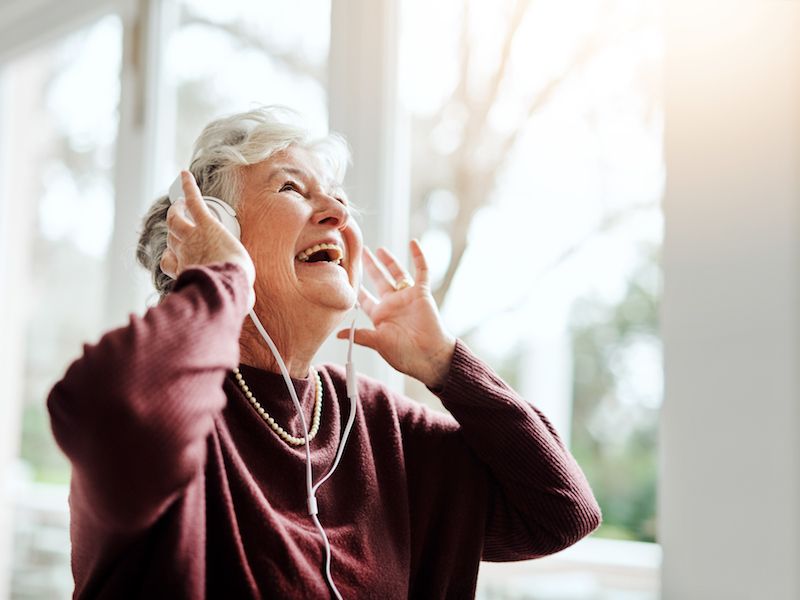
Individuals who work in loud settings such as construction sites or at heavy metal concerts are not the only ones affected by noise related hearing loss. Recreation related noise exposure can be just as dangerous as work related noise exposure. The most prevalent type? Loud sounds heard through headphones, whether it be music, gaming, streaming video, or even an audiobook with the volume cranked up.
You might be surprised to learn that a mobile device can get that loud. The average pain threshold for human hearing is about 150 db which is well within the range of these devices. This is the volume at which noise starts to literally hurt your ears. So what’s the answer for safeguarding your hearing against volume related injury.
It’s relevant here to consider the volume. An easy shorthand that’s widely recommended is the 60/60 rule: Listen with the volume at no more than 60% for no more than 60 minutes in a single session (because how long you listen for matters, too).
Create a Setting on Your Hearing Aids For Music
Be sure, if you’re wearing hearing aids, you don’t attempt to drown out other sounds by turning your streaming music up too high. Also, ask us about how best to listen to music. If you’re a musician or real music aficionado you may have recognized that most hearing aids are programmed to enhance the quality of voices…not necessarily music. We might be able to make adjustments to reduce noise and feedback while boosting some frequency to better the quality of sound while listening to music.
How to Choose The Best Headphones
When purchasing headphones there are lots of options, especially if you have hearing aids. There are a few things to think about, even though it’s generally a matter of personal choice.
Headphones That go Over The Ears
Over the ear headphones are becoming popular again but you most likely won’t see the old foam covered ear pieces that used to come with a walkman. Often shockingly expensive, they offer a large variety of color choices and celebrity endorsements, and of course, better sound quality. And unlike those little foam pads, these go over the entire ear, stopping outside noises.
Conventional perception is that these are less dangerous than in-ear headphones because the source of the sound is further away from your eardrum. But because the speakers are bigger they are normally capable of much higher sound level. Additionally, noise-canceling may help you ignore the crying baby on your flight, but in other scenarios, it can block sounds you should hear (such as a car honking). With that being said, because they cancel out outside noise, you can often decrease the volume of what you’re listening to so it’s not loud enough to hurt your hearing.
Earbuds
The normal earbuds that are included with devices such as iPhones are known for their poor sound quality, but because they come along with your phone lots of people still use them. Moreover, with newer models that no longer have a headphone jack, sticking with Apple’s earbuds can just be easier.
Earbuds also don’t cancel out sound so the downside is, you have a tendency to crank up the volume. Again, though it’s commonly said that earbuds are problematic because you stick them into your ear so their speakers are really close to your eardrum, actually volume is really the biggest concern.
Occluding or Isolating Earbuds
A lot of people choose earbuds with a rounded, rubbery tip both because they’re more comfortable than traditional earbuds and better at stopping outside sounds. The rubber molds to the shape of your ear, producing a seal that stops other noises from getting in. But these earbuds can also block out noises you need to hear and volume is still the biggest issue. Needless to say, these won’t work for you if you wear hearing aids.
Several pairs might have to be tested before you find headphones that do the job. Your expectations, acoustically, will differ dependant on what type of usage you usually give them. The relevant thing is to find headphones that make it comfortable for you to listen at a safe and secure sound level.
Don’t Cut Corners When Dealing With Your Hearing
How can you be sure it’s safe? There’s an app for that…If you use a smartphone, you can download the National Institute for Occupational Safety and Health’s free Sound Level Meter app. There are other apps you can get, but studies has found that the reliability of these other apps is spotty (in addition, for whatever reason, Android-based apps have been shown to be less reliable). That prompted NIOSH to develop their own app. You can measure outside sounds using the app, but sounds coming out of your device’s speakers can also be measured, in other words, the actual volume of what’s being sent to your ears. It’s a little bit of work, but putting in place these types of preventative steps can help protect your ears.
